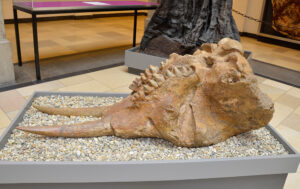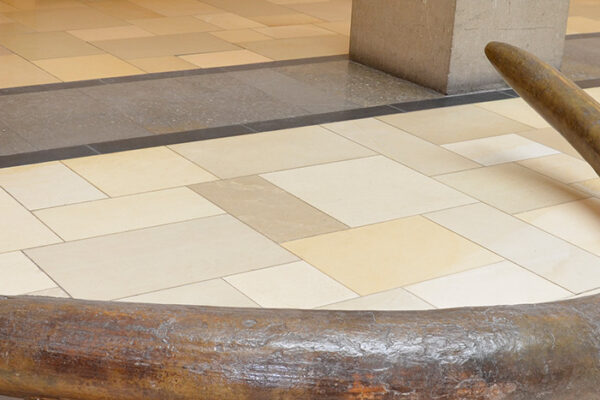Prehistoric Elephant Skull
Prehistoric Elephant Gomphotherium angustidens – Skull Resting on the Skullcap
Upper Freshwater Molasse
Neogene: Miocene: Burdigalian, approx. 16–17 Mio. years old
Mainburg, Lower Bavaria, Bavaria, Germany
Like today’s elephants, Gomphotheria also had a horizontal tooth change. Here, tooth formation took place sequentially and tooth replacement from back to front, which is why none of the teeth were ever in use at the same time and the degree of wear in the dentition increased from back to front.
SNSB-BSPG 1959 I 133
Original







